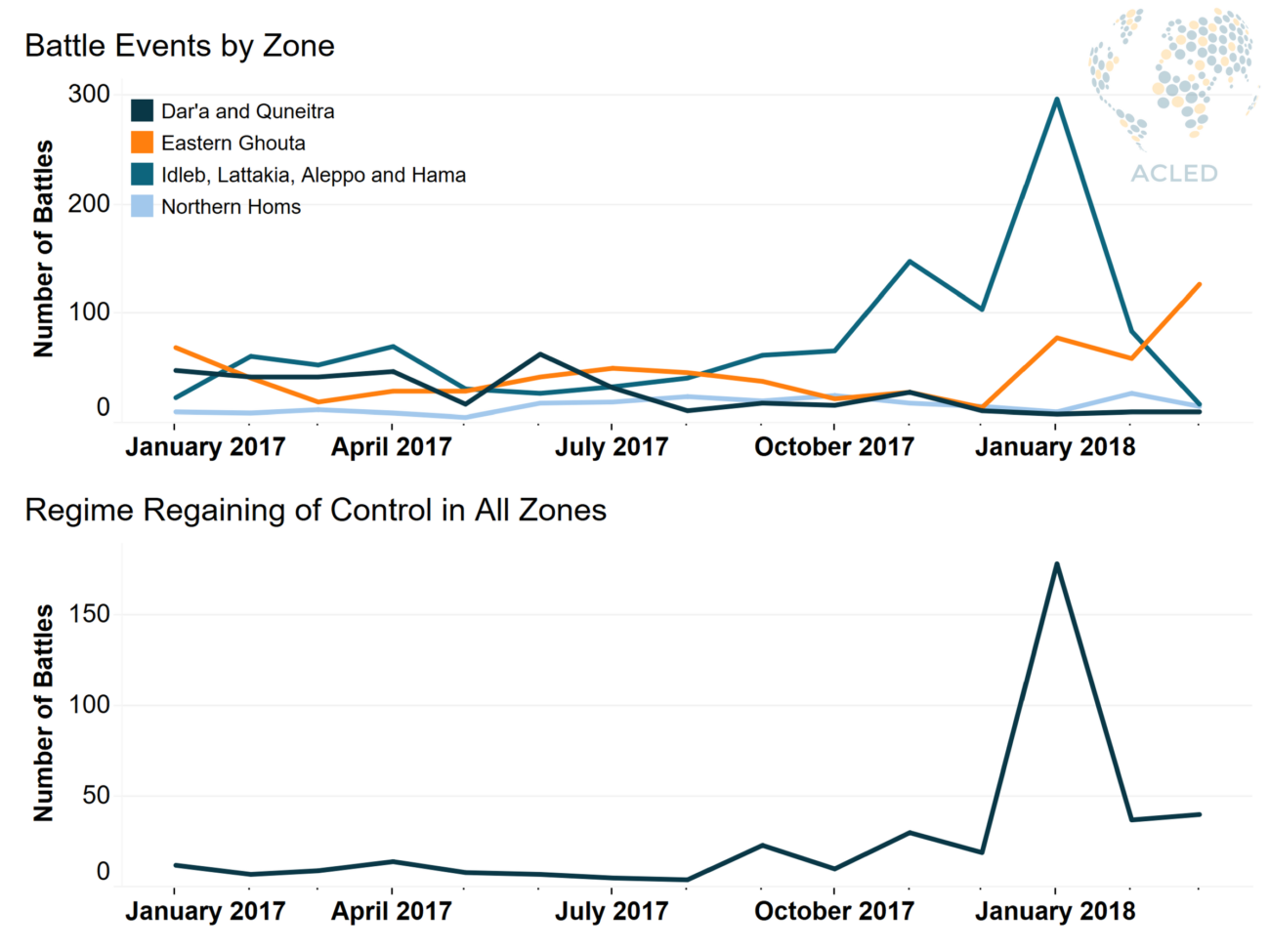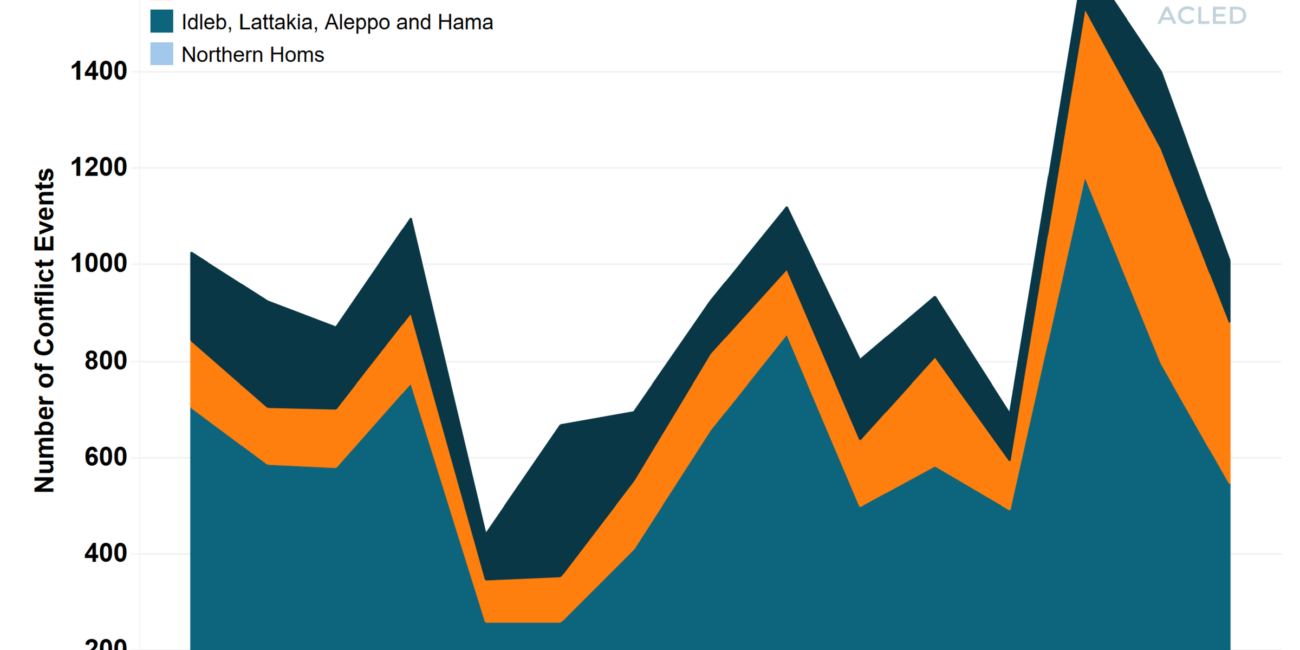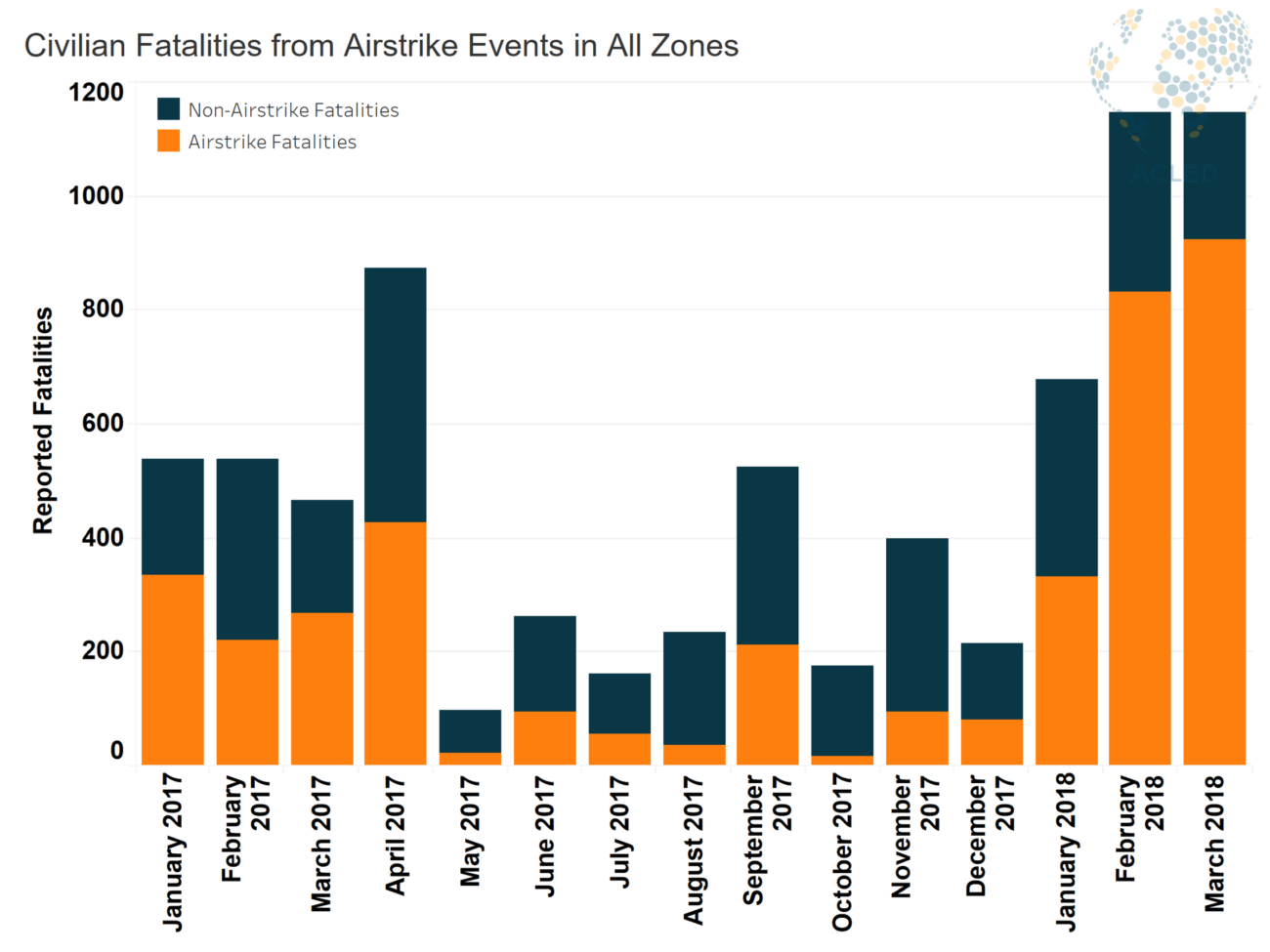On 6 May 2017, during the Astana De-Escalation Agreement talks, Russia, Iran, and Turkey agreed to establish what they called ‘de-escalation zones’ in Syria (Al Jazeera, 2017). These zones were to be located in four stretches of territory still controlled by opposition forces in 1) Idleb, northeast Lattakia, areas of Aleppo, and northern Hama provinces 2) Northern Homs governorate 3) the Eastern Ghouta region of Rural Damascus and 4) Dar’a and Quneitra provinces.
The stated purpose of the zones was to reduce conflict, protect civilians, and guarantee full access for humanitarian aid in order to subsequently start the peace process. However, ACLED data show only a temporary drop in violence in these areas in May 2017, followed by the resumption of previous levels of violence and then further escalation (see Figure 1).
Figure 1 – Political Violence Levels Over Time in Syria’s De-Escalation Zones
Following the remarkable decrease in violence in May 2017, from June to August the frequency of battles between regime forces and rebel factions increased steadily, and by September 2017 exceeded April 2017 levels. Specifically, ACLED data demonstrate two distinct spikes in the frequency of battles in the de-escalation zones following the agreement (see Figure 2).

The first spike in battles occurred when the Syrian regime, supported by Russia, began a wide-scale offensive in late December 2017 on the rebel-held positions in southern Aleppo countryside, north eastern Hama countryside, and south eastern Idleb; all areas included in the de-escalation agreement. As a result of this offensive, the regime forces gained control of more than 300 towns and villages in these areas.
The second spike took place in late February 2018 when the Syrian regime forces, again supported by Russia, re-commenced their offensive on Eastern Ghouta. This resulted in their gaining complete territorial control of the area and the displacement of more than 300,000 civilians towards northern Syria and regime-controlled areas.
In addition to these territorial gains made by the regime in de-escalation zones from late 2017, the decrease in battles within these areas during the period immediately following the agreement (May 2017) was likely used strategically. The reduction in violence in de-escalation zones following the agreement allowed the Syrian army to redeploy its elite forces, ‘the Tiger Forces’, to eastern Syria which was under full control of ISIS; outside the de-escalation zones. During this time the Tiger Forces gained control of wide areas in the eastern part of Syria, especially in Deir Ez Zour and Homs provinces, including the strategic town of Palmyra “Tadmor” in Homs countryside and most of Al-Raqqa southern countryside. Most significantly, they were able to break the siege imposed by ISIS on regime forces in Deir Ez Zour city, which had lasted almost 3 years (2014-2017) (The Guardian, 2017).
This advancement by the Syrian army in eastern Syria was enabled by the relatively static fronts in rebel-held de-escalation zones. This suggests Russia and the Syrian regime were using the agreement as a war management strategy, stalling fighting in one area, so as to achieve more territorial gains in another.
The increase in the violent activities in the de-escalation zones led to, as expected, an increase in the civilian fatalities, mainly during the period between December 2017 and March 2018. Moreover, 50 to 70 percent of the fatalities were caused by aerial attacks perpetrated by either regime or Russian air forces. This reflects a recurring pattern: regime forces begin every battle by conducting extensive airstrikes on the targeted area in order to pave the way for the ground forces. Future battles involving regime forces are likely to result in similar spikes in the civilian fatalities. Furthermore, as the remaining opposition-controlled areas are besieged, civilians are trapped in small, surrounded areas and therefore the risk to them remains extremely high.
Figure 3 – Civilian fatalities & fatalities in aerial activities








